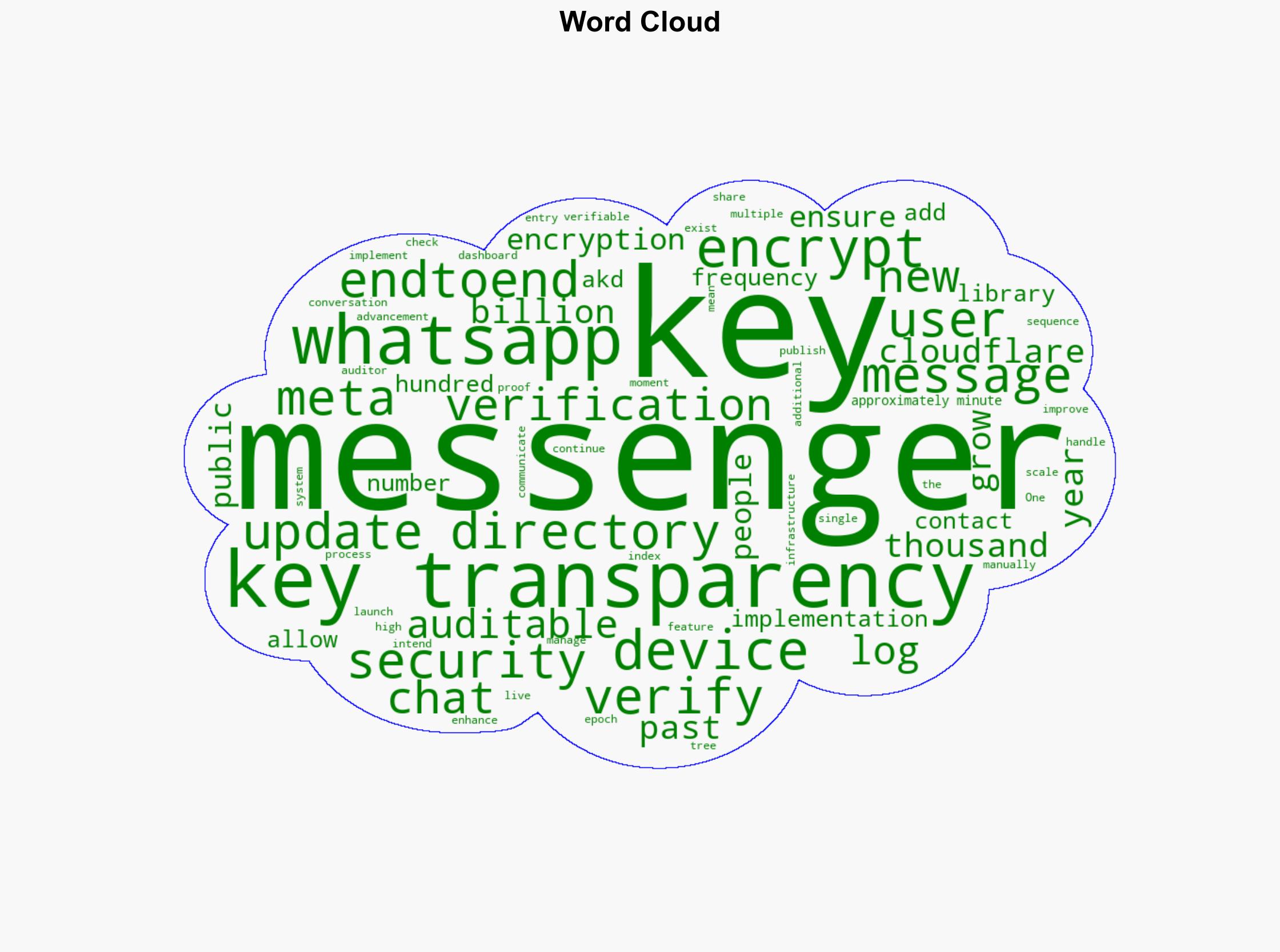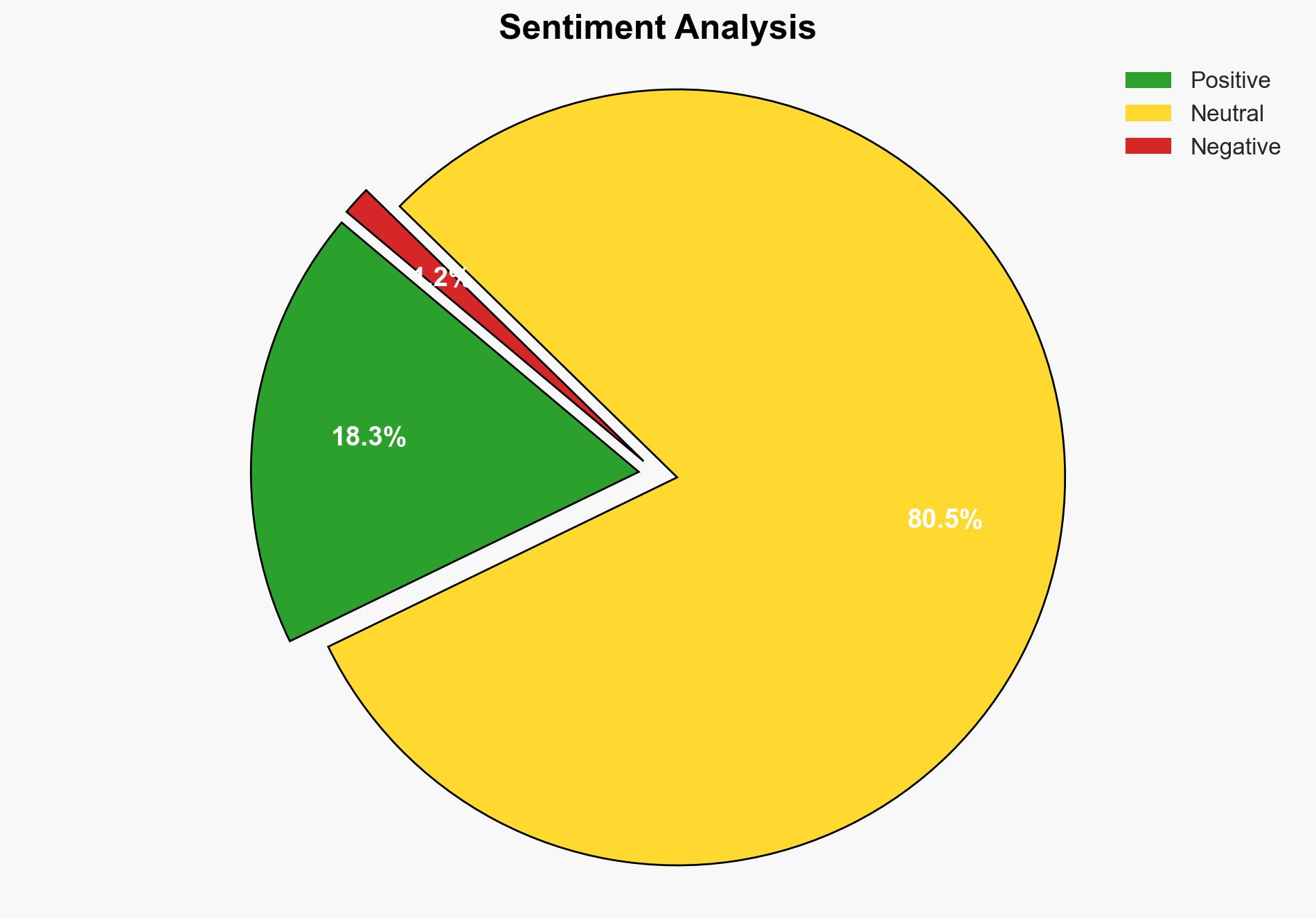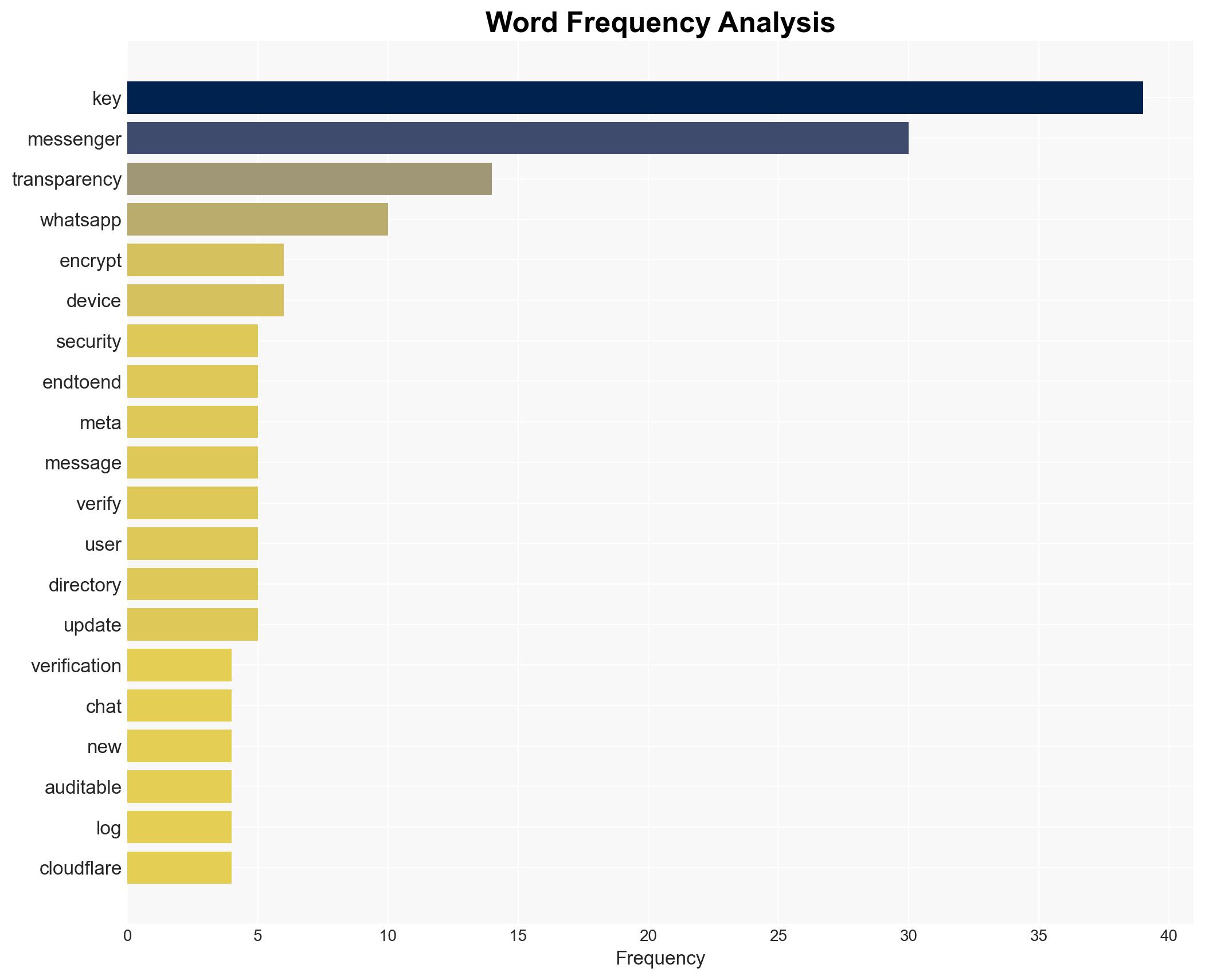Key Transparency Comes to Messenger – Fb.com
Published on: 2025-11-20
AI-powered OSINT brief from verified open sources. Automated NLP signal extraction with human verification. See our Methodology and Why WorldWideWatchers.
Intelligence Report: Key Transparency Comes to Messenger
1. BLUF (Bottom Line Up Front)
The strategic judgment is that Meta’s implementation of key transparency in Messenger is a significant enhancement in user data security, with a moderate confidence level. The most supported hypothesis is that this move is primarily aimed at strengthening user trust and privacy in response to increasing scrutiny over data security practices. Recommended action includes monitoring the implementation for potential vulnerabilities and assessing its impact on user engagement and trust.
2. Competing Hypotheses
Hypothesis 1: Meta’s implementation of key transparency in Messenger is primarily a strategic move to enhance user trust and privacy, responding to increasing demand for secure communication platforms.
Hypothesis 2: The initiative is driven by regulatory pressures and the need to preemptively address potential legal challenges related to data privacy and security.
Hypothesis 1 is more likely, as the narrative aligns with Meta’s historical emphasis on user-centric innovations and the competitive need to differentiate Messenger from other messaging platforms. Hypothesis 2, while plausible, lacks direct evidence of immediate regulatory threats compelling this specific action.
3. Key Assumptions and Red Flags
Assumptions: It is assumed that the key transparency feature will be effectively implemented without significant technical issues. It is also assumed that users will perceive this feature as a positive enhancement to their privacy.
Red Flags: Potential red flags include technical failures in the implementation, user confusion or resistance to new security features, and possible exploitation by malicious actors if vulnerabilities are discovered.
4. Implications and Strategic Risks
The introduction of key transparency could lead to increased user trust and engagement, potentially enhancing Meta’s market position. However, there are strategic risks, including the possibility of technical challenges during implementation that could undermine user confidence. Additionally, if vulnerabilities are exploited, it could lead to significant reputational damage and regulatory scrutiny.
5. Recommendations and Outlook
- Actionable steps include conducting rigorous testing of the key transparency feature to identify and mitigate potential vulnerabilities before full deployment.
- Engage in proactive communication with users to educate them on the benefits and functionality of the new security feature.
- Best-case scenario: Successful implementation leads to increased user trust and competitive advantage.
- Worst-case scenario: Technical failures or security breaches result in reputational damage and regulatory challenges.
- Most-likely scenario: Gradual user adoption and increased trust, with minor technical adjustments needed post-launch.
6. Key Individuals and Entities
Mark Zuckerberg (CEO of Meta), Meta Platforms, Inc., Cloudflare (partner for key transparency auditing).
7. Thematic Tags
Cybersecurity, Data Privacy, User Trust, Regulatory Compliance
Structured Analytic Techniques Applied
- Adversarial Threat Simulation: Model and simulate actions of cyber adversaries to anticipate vulnerabilities and improve resilience.
- Indicators Development: Detect and monitor behavioral or technical anomalies across systems for early threat detection.
- Bayesian Scenario Modeling: Quantify uncertainty and predict cyberattack pathways using probabilistic inference.
Explore more:
Cybersecurity Briefs ·
Daily Summary ·
Support us





